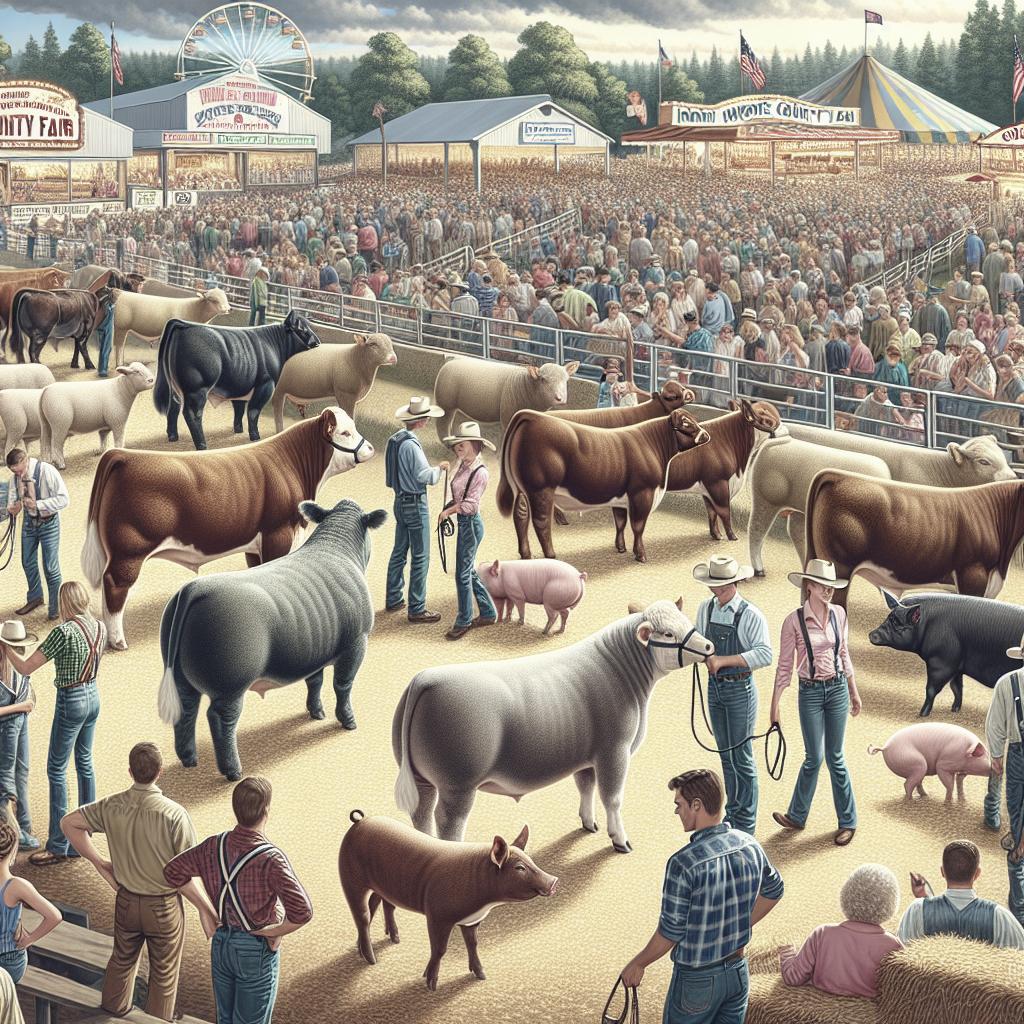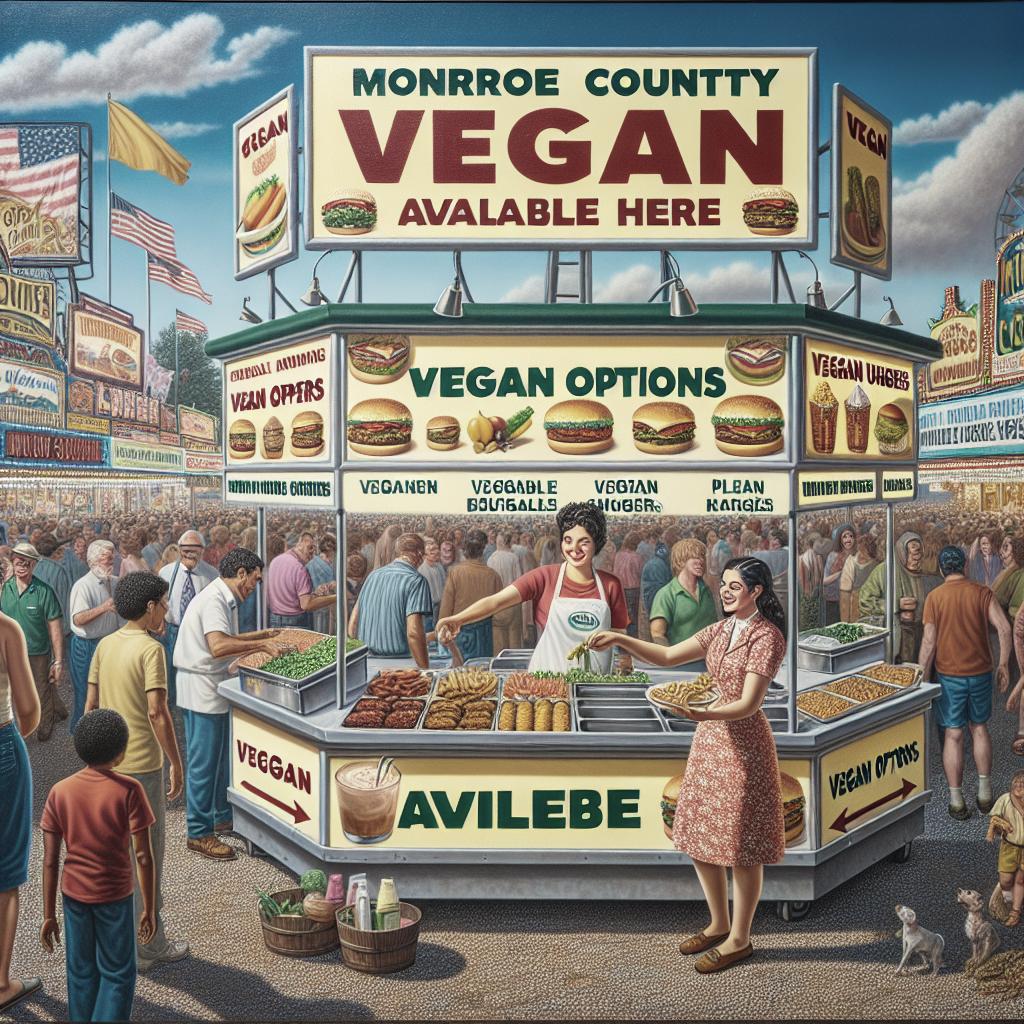“`html
The Monroe County Fair is a staple event filled with entertainment, food, and various competitions — with livestock shows being a highlight. This blog post dives into the livestock show schedule at the Monroe County Fair, exploring each month’s related events, running from April to December. Highlighting the entire scope of activities, particularly focusing on the actual fair in late July and early August, we aim to provide a comprehensive guide for anyone interested in attending or participating in livestock events.
April
April marks the beginning of pre-fair events and livestock preparations. During this month, 4-H clubs and local agricultural organizations host preliminary meetings and training sessions for young exhibitors preparing for the fair. These events provide valuable opportunities for young participants to learn about animal care, showmanship, and competition standards.
Additionally, April is when many local farms start prepping their animals for the upcoming show season. It’s a critical time where animal conditioning, diet plans, and grooming routines are fine-tuned to ensure the livestock is in peak condition for the competitive circuits leading up to the Monroe County Fair.
May
May typically features more intensive training sessions and workshops. The emphasis shifts to practical skills such as handling different livestock species, from cattle and pigs to goats and poultry. Exhibitors can attend seminars hosted by experienced farmers and veterinarians to learn best practices for animal care and nutrition.
Local county fairs might also start in May, offering early opportunities for exhibitors to practice their skills in a competitive environment. These smaller events serve as a precursor to the Monroe County Fair, offering valuable feedback and experiences that help participants improve before the main event.
June
June is a crucial month as it leads directly into the more intense preparations for the Monroe County Fair. By this time, livestock entrants should be registered, and participants might begin to see the preliminary schedules for their show categories. Animal health check-ups are paramount during this period to ensure all livestock meet the required standards.
This month also sees a ramp-up in community agricultural events, agricultural showcases, and open farm days. These functions serve not only as practice grounds for exhibitors but also as community engagement platforms, fostering a local appreciation for agriculture and livestock management.
July
July is perhaps the busiest month leading up to the Monroe County Fair. With the final weeks of preparation on hand, exhibitors fine-tune their animal grooming and rehearsals. Livestock barns may start being set up at the fairgrounds, creating an air of excitement and anticipation.
Leading up to the big week, numerous dress rehearsals, mock shows, and final workshops are held, ensuring both the animals and their handlers are ready for the various contests. It is also a time for last-minute health checks and adjustments to ensure all livestock can compete without any issues.
July 28 – August 3 MONROE COUNTY FAIR
The highlight of the livestock show calendar is undoubtedly the Monroe County Fair, running from July 28 to August 3. This multi-day event features a diverse array of livestock competitions, from dairy cattle and beef steer classes to swine, sheep, and poultry shows. Each day is packed with different category competitions, ensuring a dynamic and engaging experience.
The fair provides an excellent opportunity for exhibitors to showcase their hard work and passion. It is also a fantastic spectacle for visitors, with judging events punctuated by live commentary, interactive displays, and educational booths. Beyond the livestock shows, the fair also offers various attractions including rides, games, and food stalls, making it a fun event for all ages.
August
Post-fair August is a time for reflection and learning. Exhibitors often attend debrief sessions where judges provide feedback on performances and suggest areas for improvement. This feedback loop is invaluable for young participants looking to enhance their skills for future shows.
In addition to reflecting on the past fair, August is also a time for planning future events and training schedules. Many clubs and organizations use this period to strategize and set goals for the next show season, making sure that their livestock care routines and showmanship techniques continually improve.
September
Come September, the focus often shifts towards regional and state fairs, where many exhibitors continue their competitive streak. These larger venues provide additional opportunities to compete and bring new experiences and challenges, honing skills further.
Educational events, such as seminars and conferences on agricultural best practices and livestock management, are also popular in September. These events are perfect for gaining new insights from experts, networking with peers, and learning about advances in livestock care and breeding.
October
October often sees a slowdown in competitive events, with a focus placed on other agricultural festivities like harvest festivals. These events celebrate the agricultural year and provide an opportunity for the community to come together in a more relaxed setting than the competitive atmosphere of fairs.
Workshops and educational programs continue, but with a broader focus on topics like sustainable farming practices, farm-to-table food chains, and innovations in agricultural technology, all aimed at improving the future of farming and livestock care.
November
November provides a break from the rigorous schedule, with many exhibitors using this time to regroup and prepare for the upcoming year’s events. Animal care remains a priority, with a particular focus on ensuring livestock are well-prepared for the colder months.
This month is an excellent time for reviewing the year’s achievements and planning for the next. Exhibitors and clubs often engage in strategy sessions and set new goals, applying lessons learned throughout the year to enhance their chances of success in forthcoming competitions.
December
Winter’s onset brings a quieter period for the livestock show community. December is a time for festive celebrations and some well-earned rest. Many agricultural clubs and organizations host holiday gatherings, awards ceremonies, and recognition banquets, celebrating the year’s achievements and recognizing outstanding contributions.
While the competitive aspect may take a back seat, animal care routines remain consistent. Ensuring that livestock are healthy and well-maintained during the winter months is essential for their readiness in the new year, ensuring they remain in prime condition for future events.
Schedule Subject To Change
It is important to note that while the above schedule offers a general idea of what to expect in terms of livestock events leading up to and following the Monroe County Fair, it is always subject to change. Factors such as weather conditions, venue availability, and public health concerns can lead to adjustments in planned activities.
For the most accurate and up-to-date information, attendees and participants should regularly check official websites, social media pages, or contact event organizers directly. Staying informed ensures that everyone can fully enjoy and participate in the exciting world of livestock shows at the Monroe County Fair and beyond.
Summary of Main Points
| Month | Activities and Events |
|---|---|
| April | Pre-fair events, training sessions, animal conditioning. |
| May | Intensive training, local county fairs, best practice seminars. |
| June | Registration, preliminary schedules, agricultural showcases. |
| July | Final preparations, dress rehearsals, livestock barn setup. |
| July 28 – August 3 | Monroe County Fair with diverse livestock competitions and attractions. |
| August | Debrief sessions, planning future events, setting new goals. |
| September | Regional and state fairs, educational events. |
| October | Harvest festivals, educational workshops. |
| November | Preparation for the next year, strategy sessions. |
| December | Holiday gatherings, awards ceremonies, consistent animal care. |
“`


